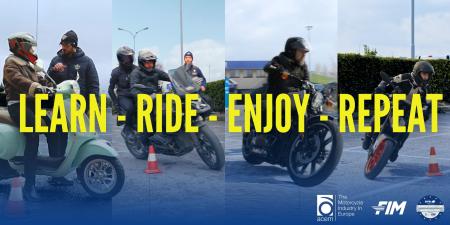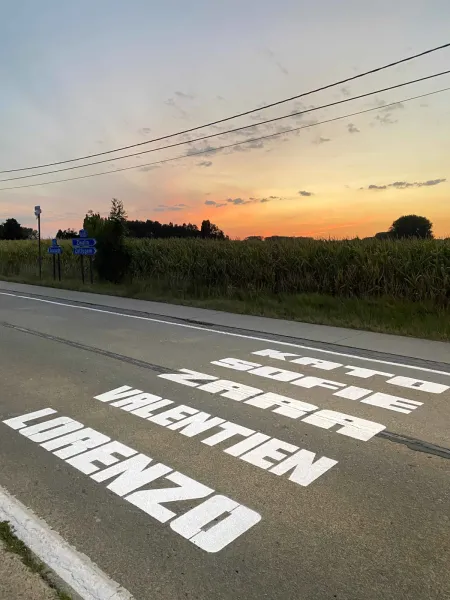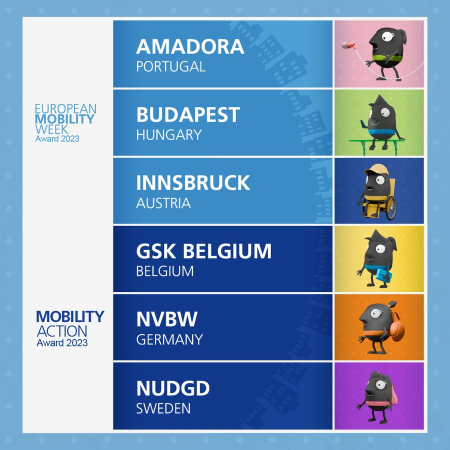Belgium

Monday, June 30, 2025
The human factor has repeatedly been shown to be the most critical factor in accidents involving riders. For this reason, lifelong training should be encouraged, reaching out to new and existing motorcyclists. High-quality training is instrumental in achieving the EU safety targets on the way to Vision Zero. To ensure that society fully benefits from all the advantages offered by motorcycles, more work is necessary to further improve the safety record of riders across Europe.

Friday, May 2, 2025
Veilig Over is een initiatief dat ernaar streeft voetgangers veilig te laten oversteken en dat bovendien iedereen toestaat om ook zélf aan te duiden waar er nood is aan een veilige oversteekplaats, via een onlineplatform veiligover.be. Samen oversteken veilig maken, dat is de ambitie van ‘Veilig Over’. Dit doen we met een unieke samenwerking met lokale en regionale overheden & burgerparticipatie en citizen sciene & wetenschappelijke evaluatie (met Vias institute). Dit alles met als resultaat: de concrete verwezenlijking van een veilige oversteekplaats op het terrein!

Tuesday, December 10, 2024
Parents play a crucial role in deciding how their children go to school. Most of the time, they chose which mode of transport their children use and which route they take to reach the school gate. And although cycling to school seems like an obvious choice for many children, for their parents, it is not. Why? Because for parents, safety concerns are decisive and often trump all other considerations. Surveys in the Belgian city of Leuven, for example, show that especially women think traffic in their neighborhood is not safe enough to allow children to cycle to school independently.
That is not just a sad observation, but also one that deserves more scrutiny. Which situations do mothers deem unsafe? And, more importantly, why? What can be done about it, so more parents are comfortable with their children cycling to school?
That is not just a sad observation, but also one that deserves more scrutiny. Which situations do mothers deem unsafe? And, more importantly, why? What can be done about it, so more parents are comfortable with their children cycling to school?

Wednesday, July 3, 2024
Young pedestrians and cyclists are vulnerable in traffic. Crash figures show that children and young people are more likely to be victims of road crashes when they start to travel independently and/or switch to a new means of transport with which they have less experience. Among young pedestrians and cyclists in Flanders, the number of road casualties increases from the age group of 6 to 11 years. Specifically among young cyclists, this increase continues in the age group of 12 to 15 years.
In the past, traffic safety and mobility education in primary education in Flanders was often limited to theoretical lessons on knowledge of traffic rules and traffic signs, usually for the age group of 6 to 12 years. With our practice-oriented pedestrian and bicycle certificates, we want to provide practice-oriented traffic safety and mobility education from kindergarten onwards (2.5 years).
In the past, traffic safety and mobility education in primary education in Flanders was often limited to theoretical lessons on knowledge of traffic rules and traffic signs, usually for the age group of 6 to 12 years. With our practice-oriented pedestrian and bicycle certificates, we want to provide practice-oriented traffic safety and mobility education from kindergarten onwards (2.5 years).

Sunday, June 23, 2024
The Mobilidata program addresses the lack of centralized, timely and qualitative real time traffic warnings in the G2B2C ecosystem.
To fulfil the need of road users to receive and be able to cooperate with (return) real time traffic warnings, Mobilidata implemented for the entire Flanders- region and on the entire public road network the European defined C-ROADS standardized Cooperation model of C-ITS or Cooperative ITS. In Mobilidata 31 different use cases are addressed – see overview of all use cases under 7.2 -images
Mobilidata is the Flanders hub where real time road safety related information comes together from these sources:
• Governmental regional and local level: e.g. roadside infrastructure like traffic controllers, variable message signs,
• Private/corporate level: e.g. Directive 2010/40/EU, EU specified SRTI (safety related traffic information) - vehicle sensor based real time warnings.
• Road user ‘community’ based: Events reported, and event feedback generated by road users.
Each of these 3 source information systems has its strengths and weaknesses, offering a neutral environment where they can be combined and distributed to all interested in a non-commercial setting is possible in a road-safety promoting context.
Road safety information in Mobilidata can be clustered in 3 subgroups per topic in the 29 on-street use case list + an extra subgroup of 2 off-street policy related use cases:
• Road regulation & policies
• Warnings / dangerous situations
• Connected infrastructure / traffic lights
To fulfil the need of road users to receive and be able to cooperate with (return) real time traffic warnings, Mobilidata implemented for the entire Flanders- region and on the entire public road network the European defined C-ROADS standardized Cooperation model of C-ITS or Cooperative ITS. In Mobilidata 31 different use cases are addressed – see overview of all use cases under 7.2 -images
Mobilidata is the Flanders hub where real time road safety related information comes together from these sources:
• Governmental regional and local level: e.g. roadside infrastructure like traffic controllers, variable message signs,
• Private/corporate level: e.g. Directive 2010/40/EU, EU specified SRTI (safety related traffic information) - vehicle sensor based real time warnings.
• Road user ‘community’ based: Events reported, and event feedback generated by road users.
Each of these 3 source information systems has its strengths and weaknesses, offering a neutral environment where they can be combined and distributed to all interested in a non-commercial setting is possible in a road-safety promoting context.
Road safety information in Mobilidata can be clustered in 3 subgroups per topic in the 29 on-street use case list + an extra subgroup of 2 off-street policy related use cases:
• Road regulation & policies
• Warnings / dangerous situations
• Connected infrastructure / traffic lights




14 March 2024 17:30 – 18:15
La Bellone
Belgium
